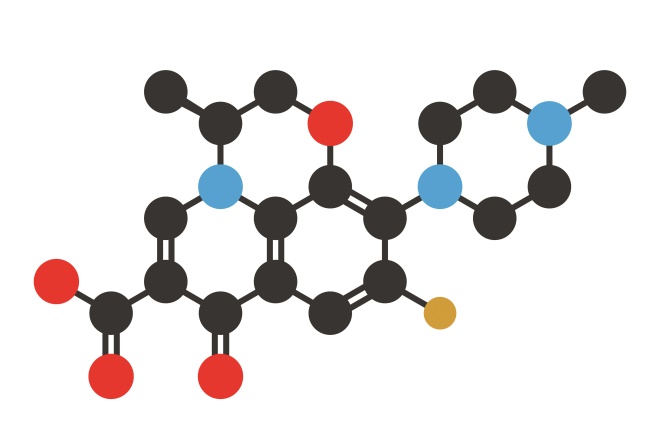Fluoroquinolone poisoning is caused by antibiotics. It can trigger severe side effects such as nausea, diarrhea, vomiting, depression, muscle pain and psychosis. Floxing can also be referred to this.
Patients who have experienced negative side effects from a fluoroquinolone/quinolone antibiotic should avoid fluoroquinolones. A special consideration should be given in the elderly, those with kidney disease and people who have had an organ transplant.

Nearly all quinolone antibiotics employed are fluoroquinolones that contain a fluorine atom in their chemical structure . They are effective against both Gram-positive and Gram-negative bacteria.
Fluoroquinolones “kill bacteria” by blocking enzymes which normaly break up DNA within cell replication. They typically cut DNA’s doublehelix. They then pass another strand through the gap and then repair the cut.
However, quinolones attach to enzymes, which prevent them from repairing the cuts. Fluorine atoms were added to the quinolone structures in the 1980s. This allowed antibiotics to penetrate all body tissues and even the central nerve system. They also increased their effectiveness against a vast variety of bacterial infections.
Fluoroquinolones might be helpful in instances where other antibiotics fail to provide adequate effectiveness.
However, they, along with numerous antibiotics, are misused. They have been linked with serious side effects over the years. The FDA has issued numerous warnings about their usage. Certain label modifications are required, and some fluoroquinolones even come with warnings in black boxes.
What antibiotics are fluoroquinolones and which are not?
The medicines are ciprofloxacin (Cipro) gemifloxacin (Factive), levofloxacin (Levaquin), moxifloxacin (Avelox) Norfloxacin (Noroxin) and ofloxacin (Floxin).
What is Fluoroquinolone Toxicity Syndrome?
The signs and symptoms
Certain adverse effects associated with fluoroquinolone medication have been demonstrated to be potentially dangerous permanent, irreversible, and permanent. They include adverse effects on the cardiovascular and central nervous systems, the musculoskeletal system, and central nervous system. Other indications of Ciprotoxicity are:
– Damage to DNA and mitochondrial dysfunction
– Brain fog
– Peripheral Neuropathy
– Blurry Vision
– DNA Damage
– Gaba and Gut Deterioration can lead to anxiety or depression.
– Tendonitis
– Muscle Atrophy
– Reflexes that are more responsive
Early signs of Cipro toxicity include low back pain, tendonitis, tendon rupture, arthralgia and pain in the extremities. gait issues, neuropathies correlated with depression, paraesthesia fatigue and memory impairment. They can also cause sleep disorders, and impaired hearing, vision, taste, and smell. Fluoroquinolones can increase the risk for developing peripheral neuropathy by 47 percent in the course of time.
Ciprofloxacin is shown to inhibit normal transcription and maintenance of mitochondrial DNA, by altering mtDNA topology. Tendinitis and tendon rupture may be caused by mitochondrial damage to tenocytes after fluoroquinolone treatment. It also can cause inflammation and fatigue.
For more information, click how to heal from floxing